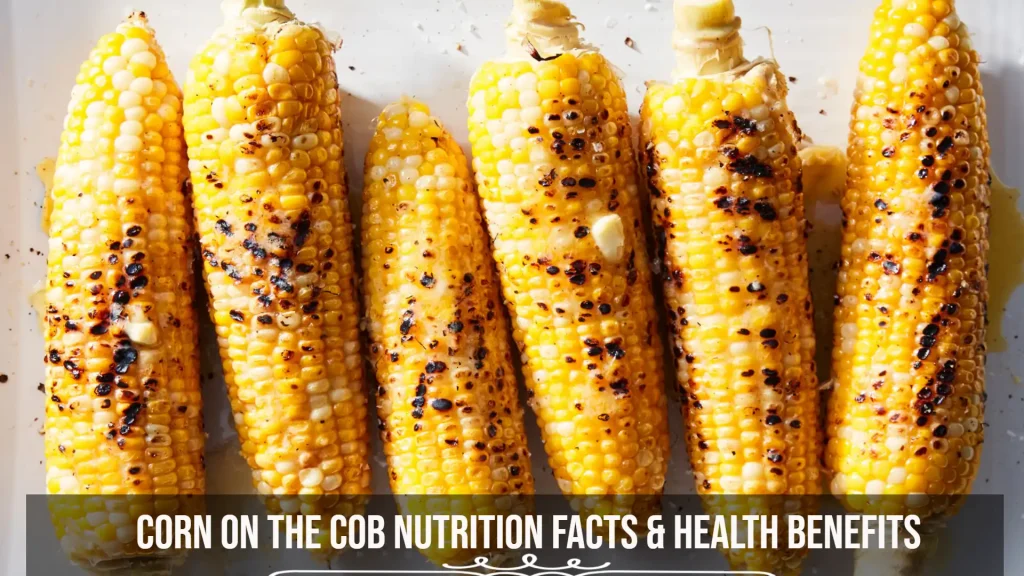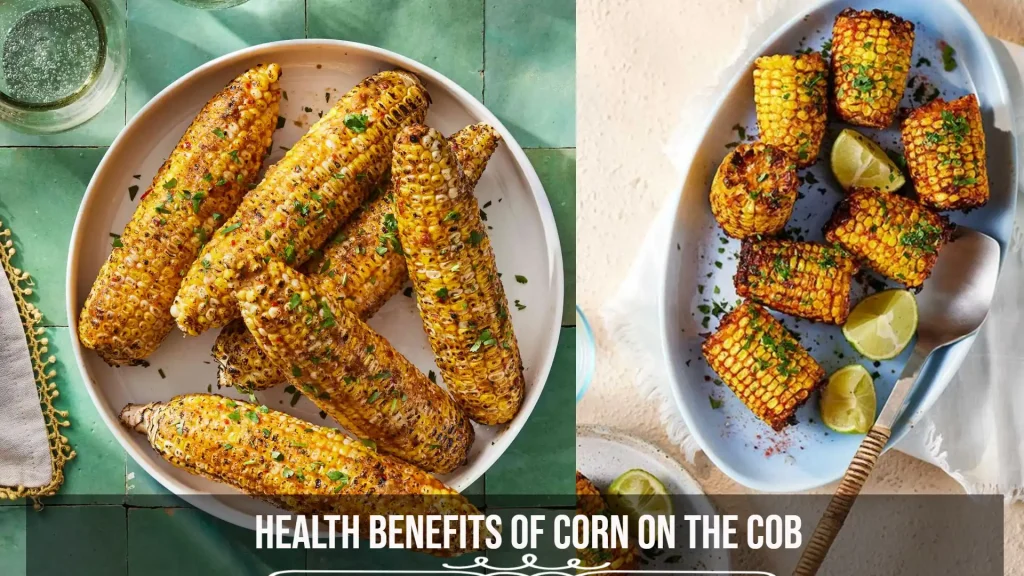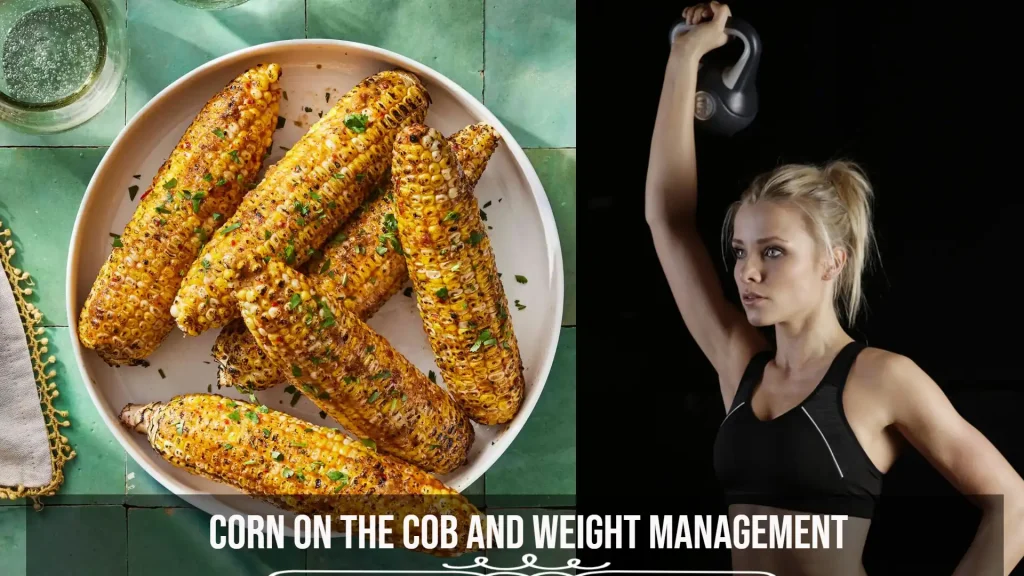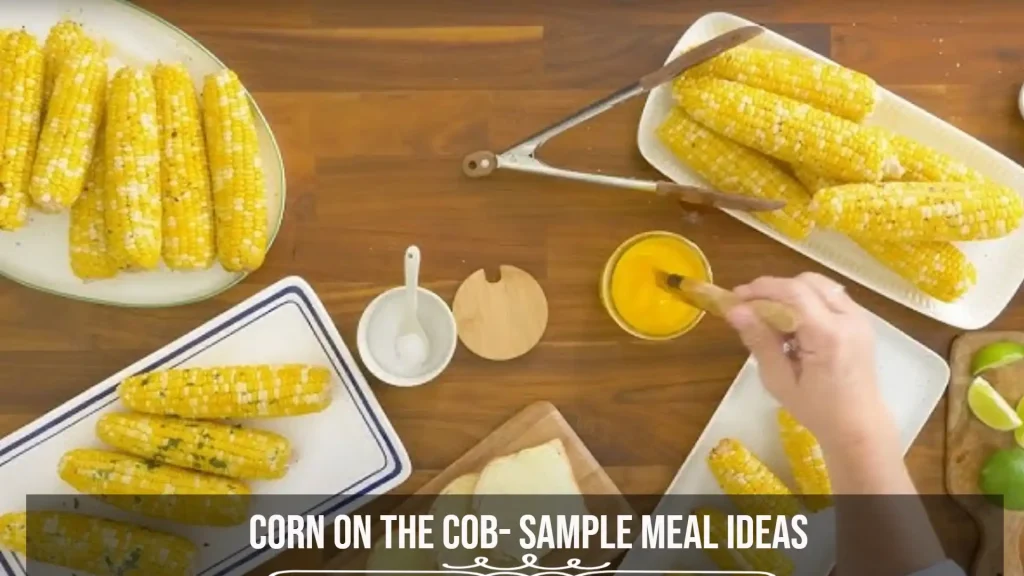Corn on the cob is one of those foods that evokes summer — sunshine, grilling, fresh produce. But beyond the flavor and nostalgia, corn on the cob is also more than just tasty: it’s nutritious. If you like to know exactly what you’re eating, here’s a detailed guide to corn on the cob nutrition facts, its macro- and micro-nutrients, health benefits, how it affects blood sugar, what to watch out for, and how to best prepare it.

What is “Corn on the Cob”?
Before diving into nutrition, let’s clarify what we mean:
- “Corn on the cob” refers to the ear of corn (sweet corn usually) with kernels attached to the cob, eaten as a whole.
- Sweet corn (Zea mays var. saccharata) is the type most people eat fresh or grill.
- It’s considered a starchy vegetable when fresh, and a whole grain when dried.
Key Corn on the Cob Nutrition Facts (Medium Ear)
According to USDA / VerywellFit & similar nutrition sources, here are typical values for one medium ear of corn on the cob (about 6-3/4″ to 7-1/2″ long) if eaten plain, boiled or grilled without butter.
| Nutrient | Amount per medium ear | % Daily Value (approx.)* |
|---|---|---|
| Calories | ~88 kcal | 4-5% DV |
| Carbohydrates | ~19 g | ~6-7% DV |
| Dietary Fiber | ~2 g | ~8% DV |
| Sugars (natural) | ~6.4 g | — |
| Protein | ~3.3 g | ~6% DV |
| Fat | ~1.4 g total (very little saturated) | < 2% DV |
| Sodium | ~15 mg | < 1% DV |
| Potassium | ~275 mg | ~6-7% DV |
| Vitamin C | ~6.9 mg | ~8-10% DV |
| Thiamin (Vitamin B1) | ~0.16 mg | ~12-15% DV |
| Iron | ~0.5 mg | ~3% DV |
| Magnesium | ~37.7 mg | ~9% DV |
*Based on a typical 2,000 calorie diet. Percentages will vary with your dietary needs.
Macronutrients Breakdown
Let’s dissect the macros (carbs, protein, fat, fiber) to see what corn on the cob offers:
- Carbohydrates: Corn is relatively rich in carbs because it’s a starchy vegetable. The ~19g of carbs in a medium ear include both starch and natural sugars.
- Fiber: About 2g provides modest digestive benefits. It’s not super high fiber, but it contributes.
- Protein: 3.3g isn’t huge, but higher than many other vegetables. Corn on the cob gives more protein than leafy greens but less than legumes.
- Fat: Very little. Mostly unsaturated in traces. If you add butter/margarine/oil, this will increase.
Micronutrients & Other Beneficial Compounds
Corn on the cob isn’t just macros. It has vitamins, minerals, and plant compounds that offer health benefits:
- Vitamin C: Helps with immunity, tissue repair, antioxidant protection.
- Thiamin (Vitamin B1): Important for energy metabolism and nerve function.
- Potassium: Helps with fluid balance, heart health, and blood pressure regulation.
- Magnesium: Supports many biochemical reactions, muscles, bones.
- Antioxidants / phytochemicals:
- Lutein & Zeaxanthin (carotenoids) — good for eye health.
- Phenolic compounds, flavonoids — these help reduce oxidative stress.
Health Benefits of Corn on the Cob
Here are the significant health benefits based on scientific evidence:

1. Supports Digestive Health
Because of its dietary fiber, corn helps your gut move food along, aids in regular bowel movements, and supports a healthy microbiome.
2. Eye Health Booster
The carotenoids lutein and zeaxanthin in corn help protect against age-related macular degeneration and cataracts. These pigments accumulate in the retina and help filter light.
3. Provides Energy (Good Carbs)
The complex carbohydrates of corn offer a steady source of energy. Eating corn with some protein or fat slows sugar absorption.
4. Supports Heart Health
Corn contains minerals like potassium (which helps regulate blood pressure), fiber (which can help lower LDL cholesterol), and antioxidants that reduce inflammation.
5. Naturally Gluten-Free & Versatile
Corn is naturally gluten-free, making corn on the cob a safe option for people with celiac disease or gluten sensitivity (assuming no cross-contamination in preparation or processing). It’s also easy to cook: boil, steam, grill, or roast.
Other Considerations & Possible Downsides
Weighing benefits is good, but there are some things to keep in mind:
- Glycemic Impact / Blood Sugar: Because corn is starchy, eating large amounts may raise blood sugar, especially in people with insulin resistance. Pairing with fiber, protein, or fats helps mitigate this.
- Portion Size Matters: Butter, salt, sauces can add up and reduce the healthfulness.
- Processed Corn Products vs Fresh Corn: Fresh corn on the cob is far healthier than heavily processed corn (syrups, chips, high-salt canned, etc.).
- Pesticide exposure / GMO concerns: If that matters to you, choose organic or non-GMO sweet corn.
Corn on the Cob vs Other Forms of Corn
It helps to compare corn on the cob to other corn forms to see what changes in nutrition:
| Form | Differences vs Corn on the Cob |
|---|---|
| Frozen / boiled sweet corn kernels | Very similar macros; sometimes slightly more sodium, depending on any added ingredients. |
| Canned corn | Often higher in sodium or added sugar; lower texture quality. |
| Processed corn products (chips, corn syrup, cornmeal) | Nutrient quality drops; fiber may be less; added fats or sugars may raise calorie load. |
| Popcorn (whole grain) | Very high in fiber, low in fat when air-popped; snack form but nutrition different. |
Detailed Nutrition for Common Servings
To help with planning, here are nutrition facts for different typical servings of corn on the cob:
| Serving Size | Calories | Carbs | Fiber | Protein | Sugars | Fat |
|---|---|---|---|---|---|---|
| Medium Ear (6-3/4–7½″) plain | ~88 kcal | ~19 g | ~2 g | ~3.3 g | ~6.4 g | ~1.4 g |
| Large Ear (7¾–9″) plain | ~120–130 kcal | ~25-30 g | ~3 g | ~4 g | more sugar grams | same low fat |
| 1 Cup kernels (cooked) | ~130-140 kcal | ~30-35 g | ~3-4 g | ~4-5 g | moderate sugar | low fat |
How to Maximize Nutritional Value When Cooking
To get the best out of corn on the cob, consider:
- Keep the husk on when grilling or roasting to preserve moisture and possibly protect some nutrients from excessive heat.
- Avoid overcooking — too much heat can reduce vitamin C and some antioxidants.
- Use minimal added fat or butter, or use healthier fats (olive oil, avocado) rather than heavy butter or saturated options.
- Season smartly — herbs, spices (paprika, chili, lime) instead of heavy salt.
- Pair with protein and non-starchy vegetables to make a balanced meal.
Corn on the Cob and Weight Management
Can corn on the cob fit into a weight-loss or weight-maintenance plan?

- It provides moderate calories per ear but offers fullness because of fiber and volume.
- As part of a balanced diet, corn on the cob can serve as a satisfying side that feels substantial without super high calories.
- Just be mindful of toppings (butter, oils) which can quickly add calories.
Corn on the Cob Nutrition for Special Diets
| Diet Type | How Corn on the Cob Fits / What to Watch |
|---|---|
| Diabetic / Low Glycemic | Eat in moderate portions; pair with protein/fat to slow glucose rise. |
| Gluten-Free | Safe (natural corn is gluten-free). |
| Vegan / Plant-Based | Probably too high in carbs per ear unless a very small serving. |
| Keto / Very Low Carb | Probably too high in carbs per ear unless very small serving. |
| Whole-Food / Clean Eating | Excellent when consumed fresh or minimally cooked. |
Interesting Facts & Lesser-Known Benefits
- Carotenoids & Eye Health: Lutein and zeaxanthin are especially abundant in yellow corn and may help reduce the risk of macular degeneration.
- Antioxidants + Polyphenols: Corn contains phenolic acids, flavonoids, etc., which contribute to anti-inflammatory effects.
- Folate & B-vitamins: Corn provides B vitamins (thiamin, niacin, folate), which are essential for metabolism and neural function.
- Heart Health: Dietary fiber, potassium, and antioxidant content together help cardiovascular wellness.
Putting It All Together: Sample Meal Ideas
Here are some ways to include corn on the cob in healthy, tasty meals:

- Grilled corn on the cob with a drizzle of lemon and a sprinkle of paprika + side of grilled chicken and salad.
- Corn salad: cut kernels off the cob, mix with tomato, cucumber, onions, cilantro, lime juice.
- Corn & black bean tacos: corn kernels + black beans + avocado + whole grain tortilla.
- Corn soup or chowder (use minimal cream, focus on vegetable broth).
What Are The Benefits Of Eating Corn On The Cob?
Frequently Asked Questions (FAQs)
Here are the most common questions about corn on the cob nutrition:
Around 88 calories for a medium ear (6-3/4″ to 7½″) without butter or added fat.
Yes, it has around 19 g of carbohydrates in a medium ear, which includes natural sugars and starch.
Approximately 2 grams per medium ear. This helps with digestion and satiety.
It offers moderate protein—around 3.3 grams per medium ear. Not high, but more than many other vegetables.
It supplies vitamins like Vitamin C, Thiamin (B1), folate, and smaller amounts of Vitamin A (via carotenoids like lutein/zeaxanthin).
No, it’s low in fat—about 1.4 g total fat per medium ear, with little saturated fat.
Yes. The lutein and zeaxanthin carotenoids in corn help protect the eyes and may reduce risk of age-related macular degeneration.
It can, especially in large servings, because of the starch and natural sugars. But eating it with protein/fiber/fat helps slow down blood sugar response.
Fresh corn typically has fewer additives. Frozen corn is similar in nutrition if no added sugar/salt. Canned corn often has added sodium and sometimes sugars.
Yes, natural corn is gluten-free. Good for people with celiac disease. But “processed with wheat” or cross-contamination can be an issue for some packaged foods.
Yes — it’s filling, relatively low in calories, and nutritious. Just watch portion size and how you season/add fats.
Yes. Sweet corn vs yellow/white corn, popcorn, purple corn — each has different levels of sugars, antioxidants, pigments (e.g., anthocyanins, lutein).
Fresh ears with husk should be eaten within 1-2 days refrigerated. Once cooked, store in the fridge, use within 3-5 days.
Both are good; grilling may add flavor without much added fat. Over-charring should be avoided (can produce undesirable compounds).
Corn has more fiber, some vitamins/minerals, and relatively more protein than plain rice. However, pasta’s protein content (depending on type) may be higher. Corn tends to be lower glycemic when eaten plain.
References:
- Verywell Fit – Corn on the Cob: Nutrition, Calories, and More.
- Healthline – Is Corn Good for You? Nutrition Facts and More.
- ScienceDirect / peer-reviewed article on corn phytochemicals and health benefits.
